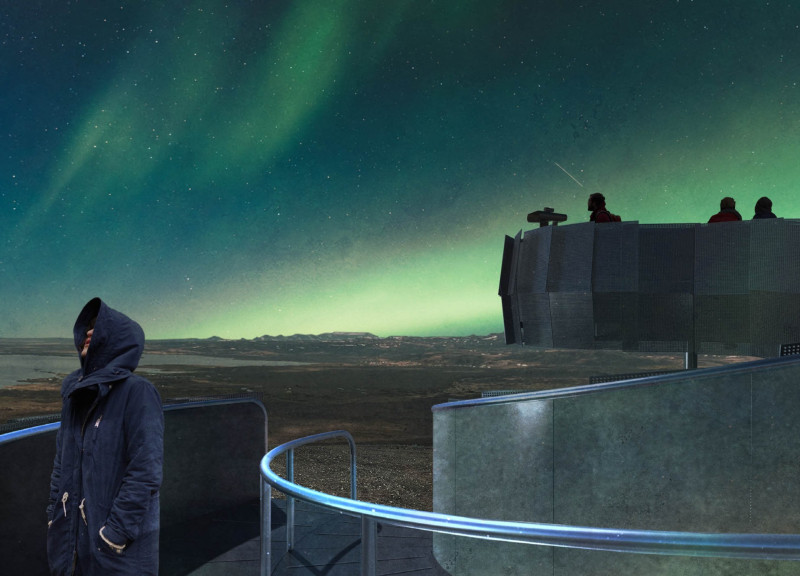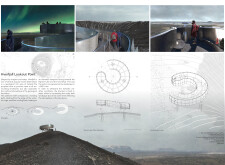5 key facts about this project
At its core, the project represents a thoughtful integration of architecture and landscape. The lookout extends from the rim of the volcano, allowing visitors to experience a continuous dialogue between the built environment and the surrounding natural beauty. The design concept emphasizes a winding pathway that leads to a circular observation platform. This pathway not only guides visitors through the terrain but also draws them into an exploration of the volcanic features that define the area. As visitors ascend the pathway, they are treated to evolving vistas of the landscape, which enhances their overall experience by allowing them to connect with the site at multiple levels.
The functional aspect of the Hverfjall Lookout Point is crucial. It serves as a gathering space for individuals seeking to take in the panoramic views of the volcanic landscape, making it an attractive destination for tourists and locals alike. This functionality is complemented by practical design features that enhance usability. For instance, the inclusion of benches made of brushed steel provides resting areas for visitors while blending seamlessly into the overall design. By encouraging people to linger and appreciate the vistas, the lookout point fosters a sense of community and contemplation.
The project's materiality plays a significant role in its relationship with the environment. Utilized materials include galvanized steel for the structural framework, providing resilience against the demanding weather conditions of the region. The exterior cladding, also made from painted steel sheets, ensures durability while adding a modern touch to the design. This choice of materials reflects the ruggedness of the landscape while maintaining a contemporary aesthetic. The interior surfaces, finished with brushed steel, create a cohesive look that mirrors the natural elements surrounding the site, reinforcing the connection between architecture and nature.
One of the unique design approaches evident in this project is its focus on creating an immersive experience for visitors. The winding pathway not only has a functional purpose but also serves as an experience in itself, gradually unveiling the breathtaking views that await at the circular observation platform. This thoughtful design promotes exploration and encourages visitors to engage with the complexity of the volcanic landscape. Additionally, the elevation of the platform ensures that it remains above snow and water accumulation, making it a year-round destination for those wishing to connect with the natural environment.
The Hverfjall Lookout Point also reflects a sensitivity to the cultural and historical context of the region. By embodying elements that resonate with Iceland’s volcanic heritage, the design fosters a deeper understanding and appreciation of the land’s geological history. The project serves not merely as a viewpoint but as an educational platform that invites exploration and discovery, encouraging visitors to reflect on the geological forces that shaped the landscape over millennia.
In summary, the Hverfjall Lookout Point is a well-considered architectural project that exemplifies a careful balance between design and nature. It offers visitors an opportunity to engage with the stunning Icelandic landscape while providing a functional space for reflection and connection. This project embodies contemporary architectural ideas that are rooted in the context of their surroundings. For a more detailed understanding of this project, including architectural plans, architectural sections, and architectural designs, readers are encouraged to explore the project presentation further to gain a deeper insight into its innovative design and multifaceted approach.























